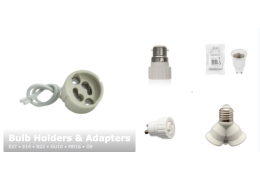Make mismatched bulbs and fittings work together with quality lamp holders and socket adapters. Explore E27, E14,...
Search in blog
Blog categories
Blog tags
Photo gallery
-

LED Lighting Colour Temperature Comparison
-

Flexible LED Strip Lighting
-

Modern LED Lighting Ideas for Home Interiors













Latest comments